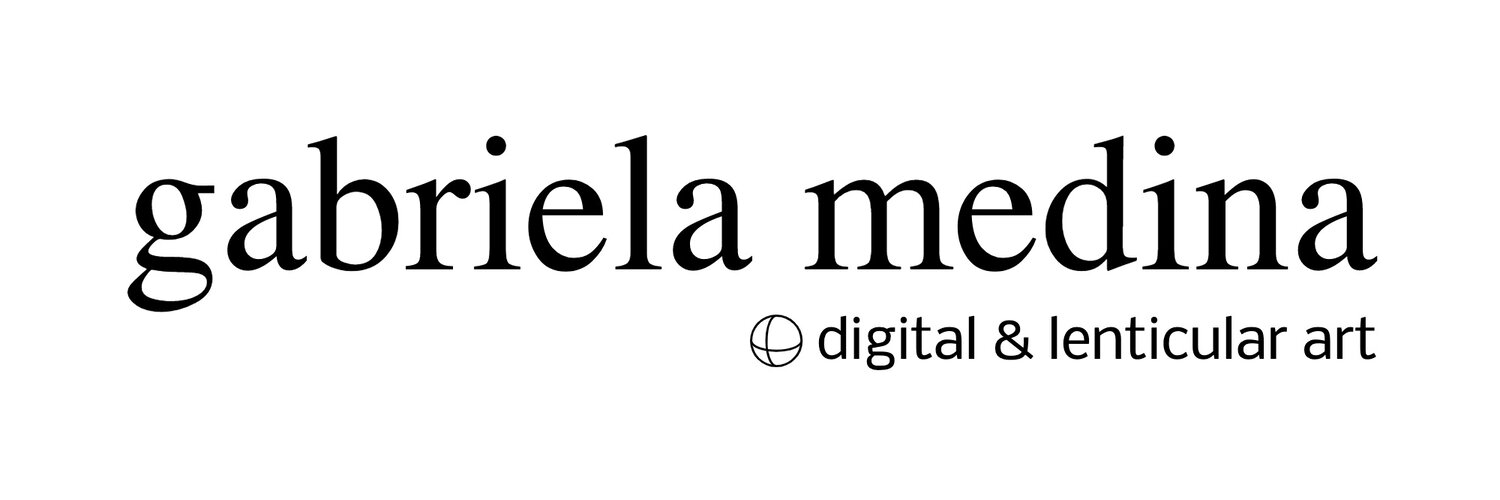Lenticular
This highly sophisticated printing technique creates an incredible illusion of depth (a 3D effect), in which elements are able to move or changein a variety of ways if the artwork is viewed from different angles.
Numerous effects can be added to the image that will in turn change as well, magnifying through the lenses a specific portion of the image, depending onthe viewing angle.
The images are created adding layer upon layer of 2D images. The more layers are used the better and even more dramatic the 3D effect and thesmoother the final transition of magnified images. It is captivating to see theotherwise still images come to life through this technique. For the artist, the one of the most rewarding moments is being able to see the interaction of the viewer with the artwork.
More about Lenticular
The lenticular process emerged in the late 19th century, pioneered by French physicist Gabriel Lippmann. Lippmann was the first to pursue the 3D representation of an object without using optical tools. By incorporating micro-lenses into a photographic emulsion, he achieved a multidimensional effect, earning him the Nobel Prize in 1908. His method laid the groundwork for the discovery of holograms.
An optical lens is a glass or plexiglass element with the ability to modify the linear propagation of received rays. One of its faces is convex and is termed the focal plane. This alteration in refractive index causes rays to pass from one medium to another, resulting in deviation from their trajectory.
Lenses act as objectives, providing different viewpoints for the right and left eyes due to the arrangement of images beneath them, creating a relief and motion effect. Each viewpoint from the left and right eyes converges at the same point on the lens.
The orientation of lenses and the required movement to view the animation vary depending on the desired effect. For instance, if lenses are vertically oriented, movement is from right to left; if horizontally oriented, movement is from top to bottom. When the lenticular matrix (image prepared using specialized software) is vertically oriented, both eyes may not simultaneously view the same group of lenses. Conversely, if the grid is horizontally oriented, both eyes see the same group of lenses.
Lenticular Plastic Composition:
Lenticular plastic consists of semi-spherical lenses with identical optical characteristics (same refractive index), arranged in parallel to form a transparent plate. Each elementary cylinder (lens) forming the array is called a lenticule. The juxtaposition of lenticules forms the lenticular array. Images must be designed so that each eye receives all parts of image 1, then all parts of image 2, and so on.
Key Steps in the Process:
The crucial step involves the emulsion—a gelatin layer coated with silver bromide crystals. Images are interleaved regularly based on the number of lenses in the material used, chosen according to the viewing distance of the print. When placed beneath the material, images must align perfectly with the lenses. Regardless of the final number, images must have the same format and resolution before interleaving. This is achieved through a special program that fragments and inserts images.
Large Lenticular Formats: Lenticular formats can reach maximum dimensions of 120x250cm.
Achievable Effects: The effects achievable include 3D, Motion, Morphing, and Flip.
We can devise together a monumental project.


